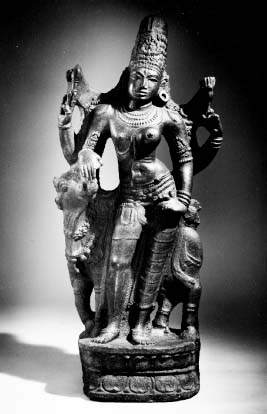HinduismHistory and Sources |
How did the Vedic scriptures describe the ultimate spiritual powers? |
Vedic cosmology divided the universe into three regions: sky, lower atmosphere, and Earth. Eleven of the thirty-three chief deities held sway over each of the cosmic realms. A deity much like the Greek Zeus ruled the sky, but he was not the head of a divine—if often unruly—family as Zeus was. Members of the Vedic pantheon seem to have risen to prominence at different times, as reflected by the numbers of hymns devoted to several individual gods. An atmospheric wind deity called Vayu and the celestial Surya, the sun, played important but still not central roles. The celestial Varuna had once headed the pantheon and oversaw cosmic order. His main competition was the atmospheric Indra, lord of inclement weather. At some point Indra eclipsed Varuna, perhaps because Indra represented a more fearsome power and imminent danger. Only the terrestrial Agni, god of fire and thus essential to Vedic sacrifice, merited more hymns than Indra. But before long even Indra bowed to two upcoming powers, the celestial Vishnu (“all-pervading”) and the atmospheric Rudra (“the howler”). Rudra eventually came to be associated with the formidable Shiva. Together, Vishnu and Shiva symbolized the global forces of sustenance and dissolution—powers that most engaged the Hindu religious imagination.

Shiva as “Man-woman Lord” (Ardhanarishwara) standing in the “triple-bend” posture, with his mount, the bull Nandi, behind him. Chola period, twelfth century. (The Saint Louis Art Museum. Friends Fund.)
